Reverse osmosis (RO) membranes play a critical role in water purification, but over time, they accumulate contaminants from the feedwater. The Besta Membrane BW-8040-FR element, designed for enhanced fouling resistance, is no exception. To maintain optimal performance and extend its lifespan, regular cleaning is essential. This article explores best practices for cleaning anti-fouling RO membranes, identifying contamination types, and detailing a systematic cleaning process.
Why Regular Cleaning is Essential
After continuous operation, RO membranes inevitably experience fouling due to suspended solids or insoluble salts in the feedwater. If left unaddressed, these contaminants reduce system efficiency and may permanently damage membrane elements. The most common pollutants include:
| Type of Contaminant | Common Sources | Effects on Membrane |
|---|---|---|
| Calcium Carbonate Scaling | Hard water, improper pH control | Reduced flow rate, increased pressure drop |
| Calcium Sulfate Scaling | High sulfate levels in feedwater | Hard-to-remove deposits, lower permeate flow |
| Metal Oxides (Fe, Mn, Cu, Ni, Al) | Corrosion, dissolved metals in feedwater | Membrane clogging, irreversible fouling |
| Silica Deposits | High silica concentrations in raw water | Reduced permeability, scaling resistance issues |
| Organic & Inorganic Deposits | Natural organic matter (NOM), chemical additives | Biofilm formation, increased cleaning frequency |
| Microbiological Growth | Bacteria, algae, fungi, mold | Biofouling, system performance degradation |
Key Factors Affecting Membrane Fouling
The nature and rate of fouling depend on several factors, including feedwater quality, system recovery rate, and operational conditions. Typically, fouling develops gradually, making early detection and maintenance critical. Without timely intervention, contaminants can cause irreversible damage in a short period.
Cleaning Frequency Guidelines
Cleaning schedules vary based on site conditions. However, a general rule is to clean RO membranes every 3 to 12 months. Monitoring system parameters—such as pressure drop, permeate flow, and salt rejection—helps determine the optimal cleaning interval.
| Parameter | Cleaning Threshold |
|---|---|
| Normalized Pressure Drop | Increase of 15% or more |
| Normalized Permeate Flow | Decrease of 10-15% |
| Salt Rejection Rate | Drop of more than 2-3% |
If any of these parameters exceed the recommended values, immediate cleaning is advised.
Step-by-Step Cleaning Procedure for BW-8040-FR Membranes
Proper cleaning enhances membrane longevity and restores performance. Follow these six essential steps:
1. Pre-Rinse with Chlorine-Free Water
Pump clean, chlorine-free RO permeate water from the cleaning tank (or another appropriate source) into the pressure vessel. Flush for a few minutes to remove loose contaminants.
2. Prepare the Cleaning Solution
In a clean tank, mix a suitable chemical cleaning solution with high-purity permeate water. Ensure the cleaning solution meets manufacturer specifications for pH and chemical concentration.
3. Circulate the Cleaning Solution
Introduce the prepared cleaning solution into the pressure vessel. Circulate it for one hour or as per the recommended duration. Maintain a controlled flow rate to prevent excessive pressure buildup.
4. Drain and Rinse the Cleaning Tank
After circulation, drain the used cleaning solution from the system. Thoroughly rinse the cleaning tank with fresh permeate water to remove residual chemicals.
5. Final Flush with Chlorine-Free Water
Pump clean, dechlorinated permeate water through the membrane system. Flush for a few minutes to remove any leftover cleaning chemicals.
6. System Restart and Final Rinse
After completing the cleaning process, restart the RO system with the product water drain valve open. Run the system for 15-30 minutes until the permeate is clean and free from detergent residues.
Best Practices for Effective Cleaning
- Monitor Performance Regularly: Routine analysis of pressure drop, flow rates, and salt rejection helps identify fouling early.
- Use the Right Cleaning Chemicals: Different foulants require specific cleaning agents. Use low-pH cleaners for scaling and high-pH cleaners for organic fouling and biofilm.
- Control Temperature and Flow Rate: Maintain the cleaning solution temperature within manufacturer guidelines (typically 30-35°C for optimal results). Avoid excessive pressure that may damage membranes.
- Establish a Cleaning Schedule: Instead of waiting for severe fouling, implement preventive maintenance based on system performance trends.
By following these best practices, users can prolong the lifespan of BW-8040-FR membranes, reduce operational costs, and improve system efficiency.
Conclusion
Cleaning anti-fouling RO membranes like Besta Membrane BW-8040-FR is a crucial maintenance task that directly impacts system performance. By understanding contamination types, monitoring key parameters, and implementing a structured cleaning process, operators can extend membrane longevity and maintain optimal efficiency. Regular maintenance not only ensures consistent water quality but also prevents costly system downtime.
Implement these cleaning strategies and keep your RO system running at peak performance!

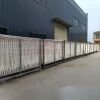 MBR Membrane
MBR Membrane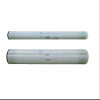 Reverse Osmosis Membrane
Reverse Osmosis Membrane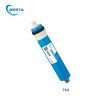 Residential Ro Membrane
Residential Ro Membrane UF Membrane
UF Membrane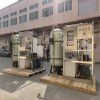 Water Treatment Plant
Water Treatment Plant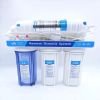 Residential Ro Machine
Residential Ro Machine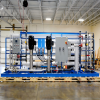 Brackish Ro System
Brackish Ro System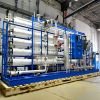 Sea water system/SW RO plant
Sea water system/SW RO plant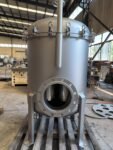 Bag Filter
Bag Filter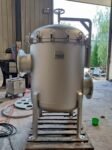 Cartridge Filter
Cartridge Filter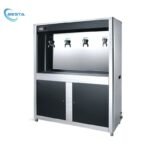 Commercial Water Filtration System
Commercial Water Filtration System Membrane Cleaning System(CIP)
Membrane Cleaning System(CIP)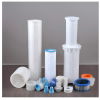 Consumables Accessories
Consumables Accessories
